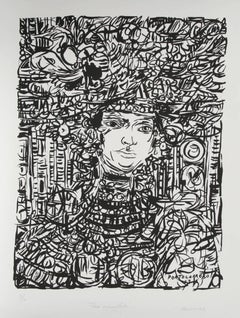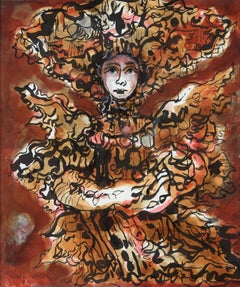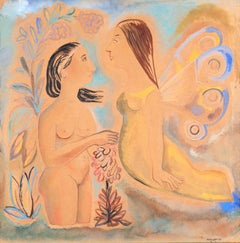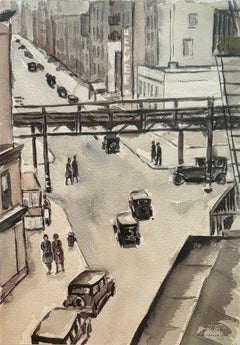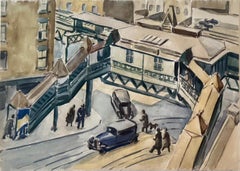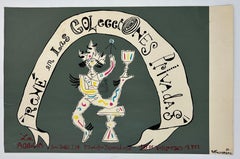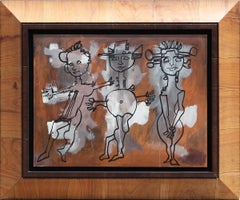René Portocarrero Art
René Portocarrero created abstracted, polychrome paintings of the religious and cultural practices and architecture of Cuba as well as portraits of Cuban women. A key figure in the second generation of Vanguardia artists in Cuba, his work was exhibited alongside Cundo Bermúdez, Mario Carreño, and Amelia Peláez in the landmark Museum of Modern Art exhibition “Modern Cuban Painters” in 1944. He was awarded the International Samba Prize at the 1963 São Paulo Bienal and was featured in the 1966 Venice Biennale. Portocarrero displayed his artistic talent at a young age; although he spent a brief period studying at the San Alejandro Academy of Fine Arts he was mostly self-taught. Known for his use of horror vacui, Portocarrero delineated space via deliberate linework. Later in his career, the artist’s interest in geometric forms led him increasingly towards abstraction. Beginning in the mid–the 1950s, he produced a series of imagined cityscapes based on Havana’s eclectic architecture.
1990s Contemporary René Portocarrero Art
Screen
1980s Modern René Portocarrero Art
Paper, Mixed Media
1940s Modern René Portocarrero Art
Watercolor
1920s American Modern René Portocarrero Art
Paper, Watercolor
1930s American Modern René Portocarrero Art
Paper, Watercolor
1930s American Modern René Portocarrero Art
Paper, Gouache
1930s American Modern René Portocarrero Art
Gouache, Board
1930s American Modern René Portocarrero Art
Paper, Watercolor
1930s American Modern René Portocarrero Art
Paper, Gouache
Harry GottliebGlassblowers WPA American Scene Mid- 20th Century Modern Figurative Workers 1932, 1932
1930s American Modern René Portocarrero Art
Paper, Watercolor
1930s American Modern René Portocarrero Art
Watercolor, Cardboard, Paper
1920s American Modern René Portocarrero Art
Paper, Watercolor, Gouache
1940s American Modern René Portocarrero Art
Paper, Watercolor
Reginald MarshReginald Marsh "Brooklyn Bridge" NYC Modernism WPA Mid-Century Watercolor Modern, 1940
Late 20th Century Modern René Portocarrero Art
Paper, Mixed Media
2010s Contemporary René Portocarrero Art
Screen
1980s Contemporary René Portocarrero Art
Screen, Paper
1970s Modern René Portocarrero Art
Mixed Media, Paper
1940s René Portocarrero Art
Paper, Gouache
1980s Contemporary René Portocarrero Art
Screen
